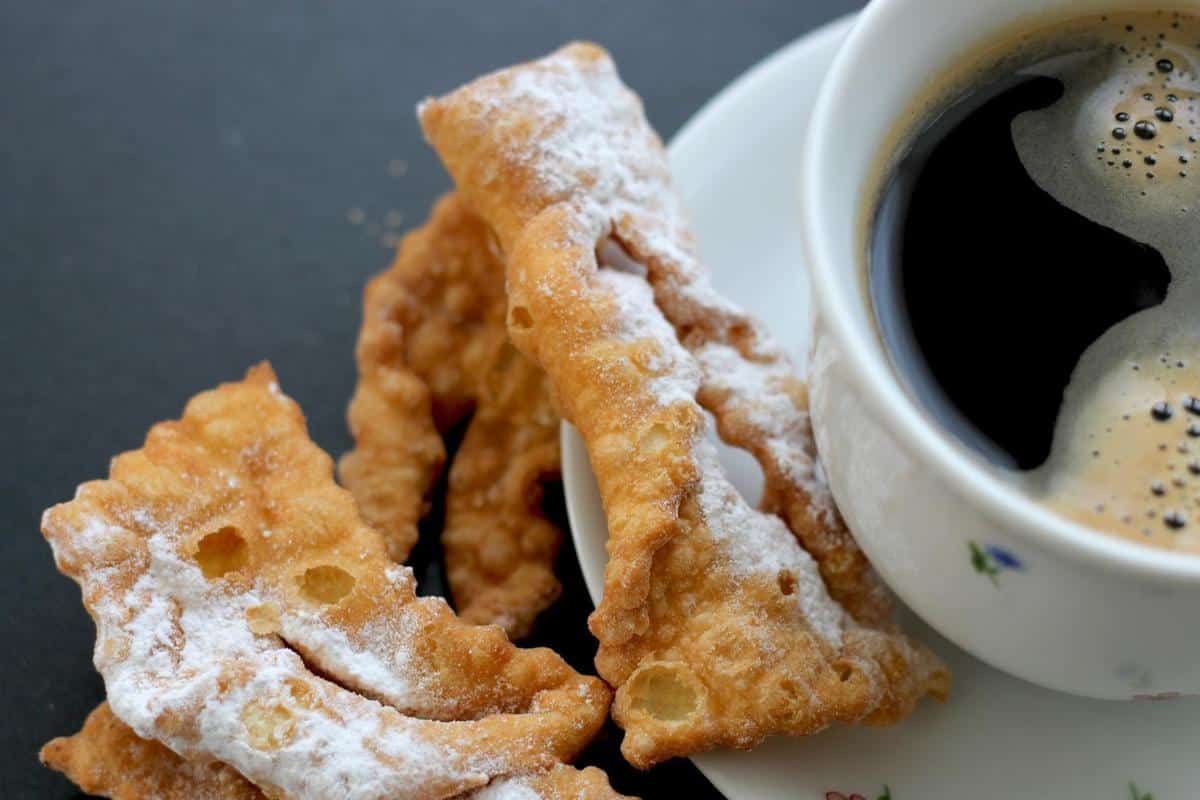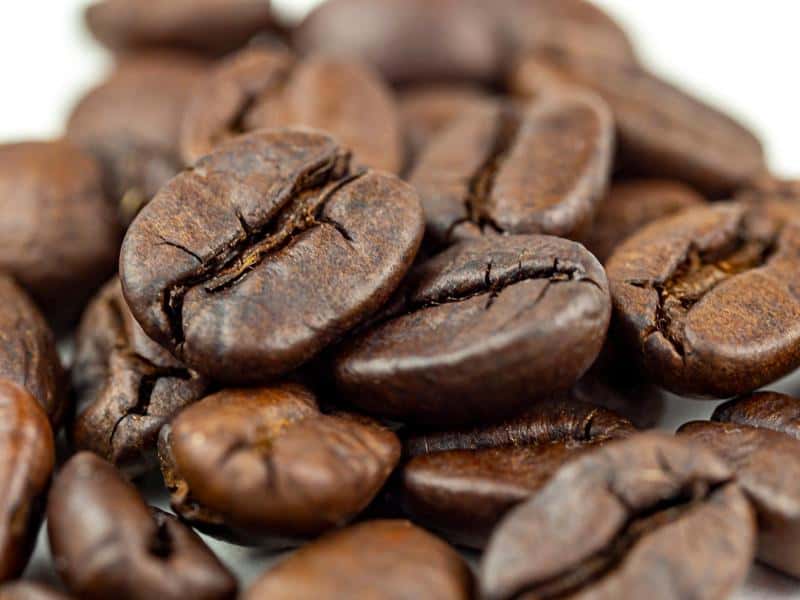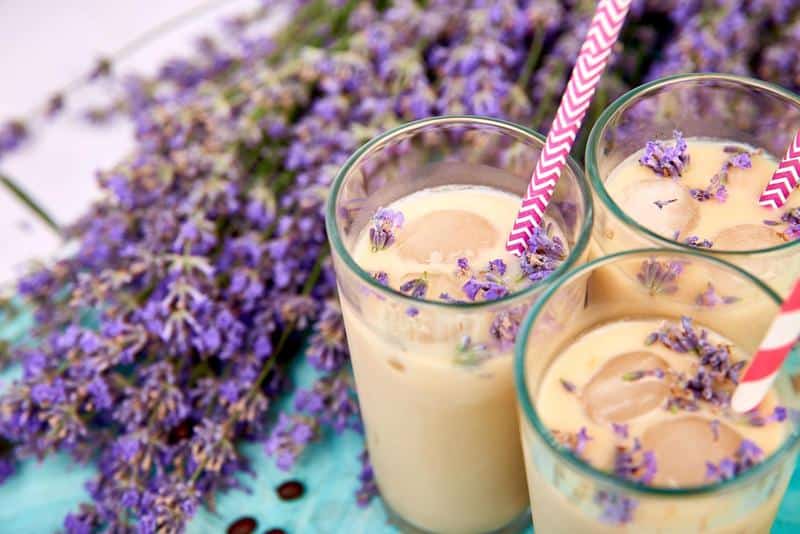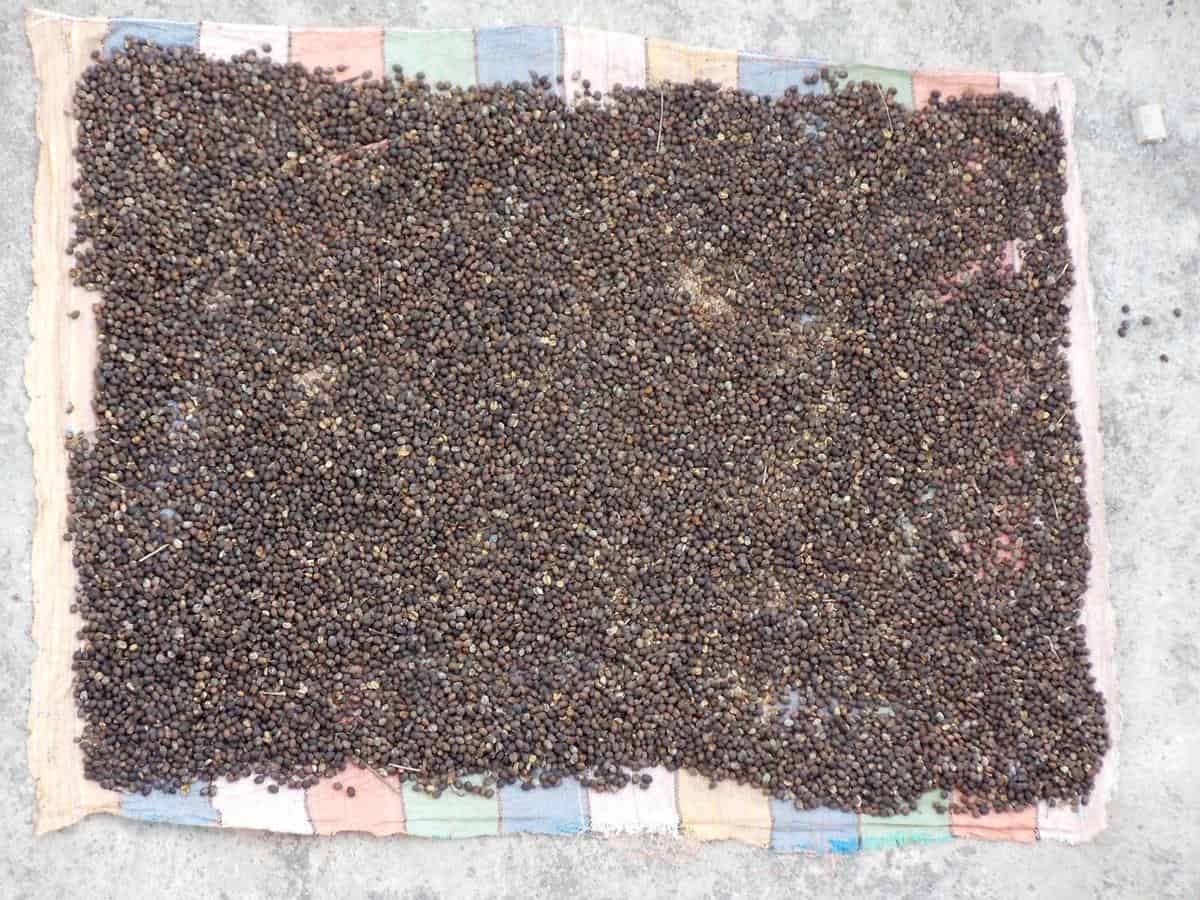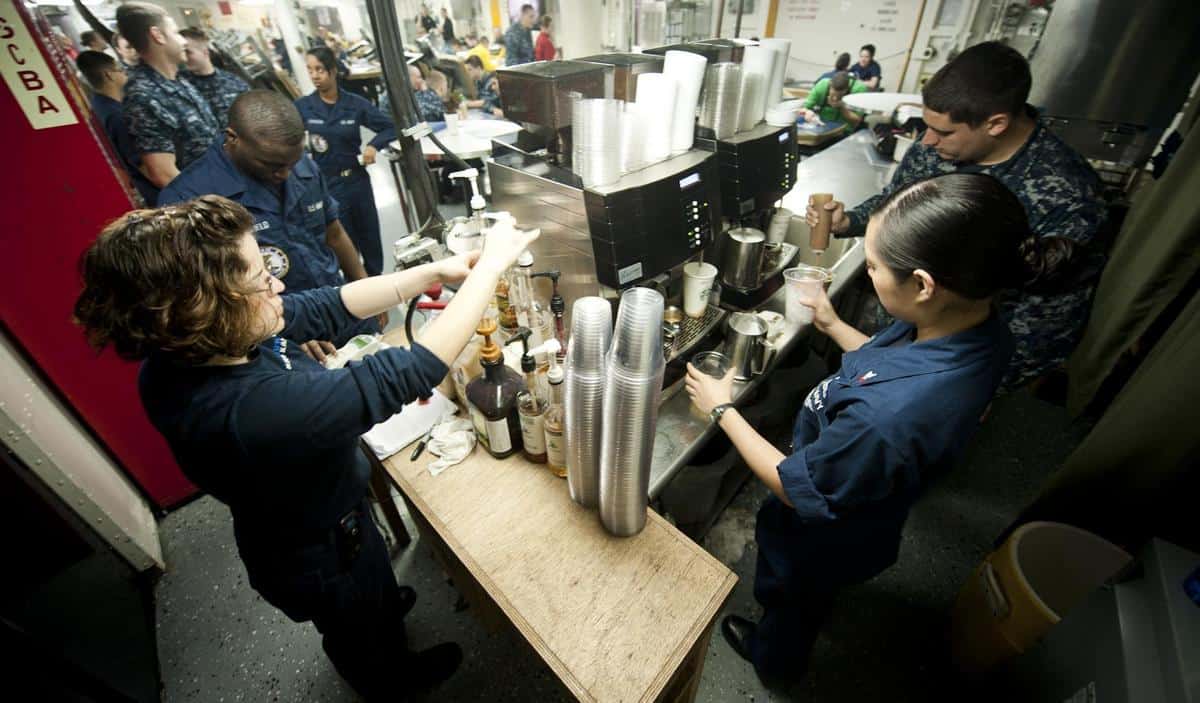Welcome to the world of irresistibly sweet coffee blends that can transport your taste buds to pure bliss. Coffee, often renowned for its robust and bitter flavors, has a whole different side when it comes to embracing sweetness. From subtle hints of caramel and chocolate to fruity undertones, the potential for sweetness in coffee is vast and exciting.
In this blog post, we embark on a journey to discover the ultimate sweetest coffee blend. With each sip, we aim to unravel the secrets behind creating a cup of joe that satisfies your craving for sweetness without compromising on complexity and depth.
Throughout this article, we will explore various factors that contribute to the sweetness of coffee – from the origins of the beans and roasting techniques to brewing methods and customization options. By understanding these elements, we can unlock the secret formula for indulging in a perfectly balanced, sweet coffee experience.
So get ready to tantalize your taste buds as we dive into the art of sweet coffee and uncover everything you need to know about finding or creating your own ultimate brew. Whether you’re new to the world of sweetened coffee or a seasoned enthusiast searching for new flavors, this guide will take you on a flavorful adventure that is sure to satisfy all your cravings.
Understanding the Art of Sweet Coffee
To truly appreciate the sweetness in coffee, it is important to understand the art behind it. Several factors contribute to the sweetness of coffee, starting from the coffee bean origins to the roasting techniques and brewing methods used. This section will delve into these aspects, shedding light on how they influence the taste and aroma of the ultimate sweet brew.
When it comes to coffee bean origins, certain varieties are known for their natural sweetness. Ethiopian Yirgacheffe, Colombian Supremo, and Jamaican Blue Mountain are a few examples. These beans are grown in specific regions with ideal conditions that enhance their sweetness and flavor profile.
For instance, Ethiopian Yirgacheffe is renowned for its fruity and floral notes, while Colombian Supremo exhibits a well-balanced sweetness and acidity. Understanding these different types of beans helps in choosing one that aligns with individual preferences for a sweeter cup of coffee.
Apart from bean origins, roasting techniques play a crucial role in bringing out the sweetness in coffee. The level of roast determines not only the flavor but also how sweet or bitter a cup can be. Medium and medium-dark roasts are generally favored for achieving a balance between sweetness and complexity.
Lighter roasts tend to preserve more acidity, which may overpower the natural sweetness of certain beans. On the other hand, darker roasts may introduce smokiness or bitterness that can overshadow sweetness. By understanding these nuances of different roast levels, one can actively participate in creating a sweeter cup tailored to their taste.
Furthermore, brewing methods also have an impact on extracting and enhancing the natural sugars present in coffee beans. Pour-over, French press, and cold brew methods are known for bringing out inherent sweetness due to their distinct extraction processes. In pour-over brewing, hot water slowly passes through the grounds, allowing for better extraction of flavors without overheating or over-extracting bitterness from the beans.
French press brewing also involves steeping the coffee grounds in hot water, allowing for a fuller body and sweeter taste. Cold brew, on the other hand, utilizes cold water over an extended period to gently pull out the sweetness and minimize acidity. Understanding these brewing techniques is essential for maximizing sweetness and achieving the perfect balance of flavors.
Exploring the World of Coffee Beans
When it comes to achieving the sweetest coffee, the type of coffee beans used plays a significant role. Different coffee bean origins and varieties have distinct flavors and sweetness levels, allowing coffee lovers to explore a wide range of options. Here are some popular types of coffee beans known for their natural sweetness:
- Ethiopian Yirgacheffe: Known for its delicate and floral flavors, Ethiopian Yirgacheffe beans often exhibit a pronounced sweetness. Grown in high altitudes with unique soil conditions, these beans offer complex fruity notes and a smooth body.
- Colombian Supremo: Colombian Supremo beans are renowned for their well-balanced flavors and medium acidity level. They typically possess a pleasant sweetness that is often reminiscent of caramel or chocolate.
- Jamaican Blue Mountain: Considered one of the finest coffees in the world, Jamaican Blue Mountain beans are prized for their sweet and bright flavor profile. These beans are grown at high altitudes in the misty Blue Mountains of Jamaica, resulting in a mild yet rich taste with subtle sweetness.
The region where coffee beans are grown and the altitude at which they thrive also contribute to their sweetness. Different microclimates and soil conditions can enhance or diminish the sugar content in the beans. Coffee enthusiasts may find that certain regions consistently produce sweeter coffees due to factors like temperature variations and rainfall patterns.
Impact of Roasting Techniques on Sweetness
Roasting is an essential step in unlocking the flavors and sweetness hidden within coffee beans. The roasting process not only determines the color of the bean but also impacts its taste profile. To achieve a sweeter cup of coffee, different roasting techniques can be employed:
- Medium Roast: Medium roasts are known to bring out the inherent sweetness of the beans while retaining some acidity and complexity. With a medium roast, coffee drinkers can enjoy a balanced cup with a smooth finish.
- Medium-Dark Roast: For those seeking bolder flavors and deeper sweetness, a medium-dark roast is an excellent option. This roast level provides rich caramelization and enhances the body of the coffee, resulting in a more pronounced sweet taste.
The time and temperature during the roasting process directly affect the development of sugars and flavors within the beans. By experimenting with different roast levels and duration, coffee lovers can discover their preferred balance of sweetness and complexity in each cup.
Overall, understanding the world of coffee beans is crucial for anyone looking to indulge in the sweetest coffee experience. From Ethiopian Yirgacheffe’s delicate floral notes to Colombian Supremo’s caramel-like sweetness or Jamaican Blue Mountain’s bright flavor profile, there are numerous options for coffee enthusiasts to explore. Additionally, experimenting with different roasting techniques can further enhance the natural sweetness of these beans, offering a unique and indulgent brew.
Roasting Techniques for a Sweeter Cup
The process of roasting coffee beans plays a crucial role in developing the flavors and sweetness of the final cup of coffee. Different roasting techniques can bring out unique characteristics and enhance the overall sweetness. In this section, we will explore the impact of roasting on the sweetness of coffee and discuss popular roasting techniques that can help you achieve a sweeter cup.
1. Light Roast:
Lightly roasted coffee beans are known for their bright acidity and subtle flavors. While they may not have the same level of sweetness as darker roasts, light roasts retain much of the coffee bean’s natural sugars, resulting in a delicate sweetness. This roast is particularly suitable for those who prefer a more nuanced taste profile with hints of floral and fruity notes.
2. Medium Roast:
Medium-roasted beans strike a balance between acidity, body, and sweetness. The longer roasting time caramelizes some of the sugars present in the beans, creating a pleasant sweetness coupled with more pronounced flavors. Medium roasts are often described as having notes of chocolate, nuts, and caramel, making them a popular choice among many coffee lovers.
3. Medium-Dark to Dark Roast:
As coffee beans continue to be roasted to higher temperatures and for longer durations, more sugars caramelize, which results in darker roasted beans tasting less sweet but potentially having bolder flavor profiles. However, it is important to note that dark roast does not necessarily equate to less acidity or bitterness; it simply changes their balance within the brew.
| Roasting Technique | Impact on Sweetness | Flavor Profile |
|---|---|---|
| Light Roast | Maintains natural sugars for delicate sweetness | Bright acidity, nuanced floral and fruity notes |
| Medium Roast | Caramelizes sugars for a balanced sweetness | Notes of chocolate, nuts, and caramel |
| Medium-Dark to Dark Roast | Moderate to reduced sweetness; bolder flavors | Possible hints of dark chocolate, toasted nuts, or smokiness |
When deciding on the perfect roast level for a sweeter cup of coffee, it is essential to consider personal preferences and taste preferences. Experimentation with different roasting techniques and variations can lead to discovering unique sweet profiles that suit individual palates. Remember that finding the right balance between sweetness, acidity, and complexity is key to indulging in the ultimate brew.
By understanding how each roasting technique affects the sweetness of coffee, you can now make an informed choice when selecting your preferred beans. In the next section, we will explore brewing methods that can further enhance the inherent sweetness found in coffee beans.
Brewing Methods for Enhanced Sweetness
When it comes to brewing coffee, the method you choose can have a significant impact on the sweetness of your cup. Different brewing methods extract different flavors from the coffee beans, allowing you to enhance the natural sweetness and bring out more complex notes. Here, we will explore some popular brewing techniques that can help you achieve an indulgently sweet cup of coffee.
- Pour-over: The pour-over method involves pouring hot water over freshly ground coffee in a filter. This technique allows for precise control over variables such as water temperature, flow rate, and extraction time. By using medium-fine grind size and a slower pour, you can highlight the subtle sweetness of your coffee while minimizing any bitterness or acidity.
- French press: The French press is known for its full-bodied flavor and richness. To accentuate the sweetness in a French press brew, use a coarse grind size and longer steeping time (around 4 minutes). The metal mesh filter allows more oils and flavors to pass through, resulting in a sweeter and fuller-bodied cup.
- Cold brew: Cold brew is a popular method for capturing the natural sweetness of coffee beans while reducing acidity and bitterness. It involves steeping coarsely ground coffee in cold water for an extended period (usually 12-24 hours). The slow extraction process creates a smooth, sweet concentrate that can be diluted with water or served over ice.
Regardless of which brewing method you choose, proper water temperature and extraction time are crucial factors for achieving enhanced sweetness. Using water between 195-205°F (90-96°C) ensures optimal extraction without burning the grounds or extracting unpleasant flavors. Extraction time varies depending on the method, but generally ranges from 2-5 minutes for pour-over and French press, while cold brew requires several hours.
Experimentation is key when it comes to finding your preferred brewing method for maximum sweetness. Adjusting the variables such as grind size, water-to-coffee ratio, and brew time can make a significant difference in the final taste. Remember to start with high-quality, freshly roasted beans for the best results.
By mastering these brewing methods, you can elevate the sweetness of your coffee and enjoy an indulgent and satisfying cup that satisfies your sweet tooth. Don’t be afraid to explore and experiment – finding the perfect brewing technique for your taste preferences is part of the joy of being a coffee enthusiast.
Sweet Additions
The Sweet Additions: Syrups, Spices, and Flavors section of this article delves into the world of adding extra sweetness and flavor to coffee. While there are many coffee purists who prefer to enjoy the natural sweetness of the beans, others may enjoy experimenting with various add-ins to enhance their coffee drinking experience.
One popular addition to sweeten coffee is flavored syrups. Flavored syrups come in a wide range of flavors such as vanilla, caramel, hazelnut, and pumpkin spice. These syrups can be easily added to both hot and cold brews and provide a burst of sweetness with every sip. They allow coffee enthusiasts to customize their beverages according to their taste preferences and create unique flavor combinations.
In addition to syrups, spices can also be used to add warmth and depth of flavor to coffee. Commonly used spices include cinnamon, nutmeg, cardamom, and cloves.
These spices not only impart a delightful aroma but also lend a subtle sweetness that compliments the natural flavors of the coffee. By infusing the ground spices with the coffee grounds before brewing or sprinkling them on top of the frothed milk in specialty drinks like lattes or cappuccinos, home baristas can elevate their cup of joe with an enticing blend of sweet and aromatic notes.
Moreover, extracts such as vanilla extract or almond extract can also provide a touch of artificial sweetness without overpowering the natural characteristics of the coffee beans. Just a small amount is needed to enhance the overall flavor profile.
By using syrups, spices, or extracts judiciously, coffee lovers can strike a perfect balance between sweetening their beverage while still allowing the unique qualities of their chosen beans to shine through.
| Addition | Usage | Flavor Profile |
|---|---|---|
| Flavored Syrups | Add a teaspoon or more to taste | Various flavors available, such as vanilla, caramel, hazelnut |
| Spices | Mix a pinch of ground spices with coffee grounds before brewing or sprinkle on top of frothed milk | Cinnamon, nutmeg, cardamom, and cloves add warmth and depth of flavor |
| Extracts | Add a few drops to brewed coffee or specialty drinks like lattes or cappuccinos | Varieties like vanilla or almond add subtle sweetness without overpowering the coffee’s natural characteristics |
Indulging in The Sweetest Coffee
Curated Selection of the Sweetest Coffee Blends
When it comes to indulging in the sweetest coffee, there are several blends available in the market that are known for their exceptional sweetness and flavor profiles. Here is a curated list of some of the best options that will satisfy your cravings for a truly delightful cup:
1. Blue Bottle Bella Donovan: This blend combines Ethiopian and Latin American beans to create a smooth and sweet cup of coffee. With notes of chocolate, caramel, and a hint of citrus, this blend is perfect for those who enjoy a balanced and flavorful brew.
2. Stumptown Hair Bender: Known for its complex flavors and sweet undertones, this blend brings together beans from Indonesia, Ethiopia, and Latin America. The result is a rich brew with notes of dark chocolate, cherry, and cane sugar that will leave you craving for more.
3. Lavazza Super Crema: If you prefer an Italian-style espresso with a touch of sweetness, this blend is the one to try. With its creamy texture and hints of honey and almonds, it offers a well-rounded coffee experience that is sure to impress.
4. Intelligentsia Black Cat Espresso: This blend features coffees from Brazil and Papua New Guinea roasted to perfection to bring out notes of brown sugar, cocoa powder, and blackberry jam. Its velvety mouthfeel and sweetness make it an ideal choice for espresso lovers.
5. Verve Streetlevel Decaf: For those who want to indulge in decaffeinated coffee without compromising on taste, this blend offers a delicious solution. With flavors reminiscent of milk chocolate, caramelized nuts, and red apple acidity, it proves that decaf can be just as sweet as its caffeinated counterparts.
Brewing Tips & Tricks for Home Baristas
Brewing Variables: Grind Size, Water Quality, and Brewing Equipment
When it comes to brewing the sweetest coffee at home, paying attention to certain variables can make all the difference. One crucial factor is the grind size of your coffee beans. Finer grinds tend to extract more flavor compounds, including sweetness, while coarser grinds may result in a weaker flavor profile. Experiment with different grind sizes to find the one that brings out the desired level of sweetness in your brew.
Another often overlooked variable is water quality. The minerals present in tap water can affect the taste of your coffee, including its sweetness. Using filtered or bottled water can help ensure a cleaner and sweeter cup. Additionally, be mindful of using water that is heated to the appropriate temperature. The ideal range for brewing is between 195°F and 205°F (90°C and 96°C), as this allows for optimal extraction of sweetness from the coffee beans.
Investing in high-quality brewing equipment can also contribute to achieving a sweeter cup of coffee. Consider using a burr grinder instead of a blade grinder to achieve a consistent grind size. This consistency helps ensure even extraction and thus enhances the sweetness of your brew. Similarly, using a brew method that allows for better control over variables like water temperature and extraction time, such as pour-over or French press, can lead to a more balanced and sweetened cup.
Tweak Your Technique: Pour-Over & Bloom
For those aspiring home baristas looking for an elevated sweet coffee experience, mastering pour-over brewing techniques is essential. One key step in this method is called “the bloom,” which involves pouring just enough hot water over the coffee grounds to saturate them thoroughly without fully immersing them. Allowing the coffee to bloom for about 30 seconds before continuing with the rest of the pour-over process enhances sweetness by releasing trapped carbon dioxide and allowing for more even extraction.
To execute a successful pour-over, ensure your technique involves pouring the water in a slow and steady circular motion over the grounds. This allows for proper saturation and extraction of sweetness from the beans. Additionally, pay attention to the duration of your pour-over process. Aim for a brew time between 3 to 4 minutes, adjusting it slightly depending on your preferred strength and sweetness level.
Remember, mastering brewing techniques takes practice and patience. Experiment with different variables like water temperature, grind size, and pouring techniques until you find the perfect combination that brings out the sweetest flavors in your coffee.
Experimenting with Flavor Enhancements
For those looking to take their sweet coffee experience to new heights, consider experimenting with flavor enhancements beyond just sugar or creamer. One popular option is adding flavored syrups, which come in a wide range of flavors such as vanilla, caramel, hazelnut, or chocolate. These syrups provide an easy way to add sweetness and unique flavors to your cup of joe.
Alternatively, try incorporating spices into your brewing routine. Cinnamon and nutmeg can add warmth and subtle sweetness to your brew. Simply sprinkle a small amount of the desired spice onto the coffee grounds before brewing for an infusion of flavor.
If you’re feeling adventurous, explore using extracts like vanilla or almond to enhance the natural sweetness of your coffee. Just a few drops can make all the difference in transforming an ordinary cup into a decadently sweet indulgence.
Whatever enhancements you choose to experiment with, remember that moderation is key. The goal is not to mask or overpower the natural flavors of coffee but rather to enhance its inherent sweetness while still allowing its distinct characteristics to shine through.
Conclusion
In conclusion, indulging in the ultimate brew of sweet coffee is a delightful experience that requires understanding and balance. Throughout this article, we have explored the various factors that contribute to the sweetness of coffee, including the origin of coffee beans, roasting techniques, and brewing methods. By considering these elements and experimenting with different combinations, coffee lovers have the opportunity to create a personalized sweet coffee experience.
The journey of discovering the sweetest coffee begins with understanding the art of coffee. It involves exploring different regions and altitudes known for producing naturally sweet beans, such as Ethiopian Yirgacheffe, Colombian Supremo, and Jamaican Blue Mountain. Additionally, finding the perfect balance between acidity and bitterness can further enhance the overall sweetness of a cup of joe.
Roasting techniques also play a crucial role in achieving that ideal level of sweetness. Medium and medium-dark roasts are popular choices for balancing sweetness and complexity. By carefully controlling the temperature and time during roasting, unique flavors are brought out while preserving the natural sweetness inherent in the beans.
Furthermore, brewing methods significantly impact the extraction of sweetness from coffee beans. Techniques like pour-over, French press, and cold brew extract not only rich flavors but also emphasize natural sweetness. Home baristas should pay attention to water temperature and extraction time to yield a perfectly sweet cup every time.
To further elevate a cup of sweet coffee, customization options are endless. Flavored syrups, spices like cinnamon or nutmeg, or extracts such as vanilla or caramel offer opportunities to create unique combinations without overpowering the innate flavors of coffee.
Frequently Asked Questions
What is the best sweet coffee flavor?
Determining the best sweet coffee flavor is subjective and can vary depending on personal preference. Some people might argue that caramel adds a delightful sweetness to coffee, while others may prefer the smoothness of vanilla or the richness of chocolate. Ultimately, it comes down to individual taste buds and what brings the most enjoyment.
Is there a sweet tasting coffee?
Yes, there are several options for those seeking a sweet tasting coffee. Many flavored syrups can be added to regular coffee to enhance its sweetness.
Additionally, some types of coffee beans naturally possess sweeter notes, such as those from regions like Ethiopia or Brazil, which often feature flavors reminiscent of fruits or chocolate. By experimenting with different beans and flavor additives, it is possible to find a sweet tasting coffee that satisfies one’s craving.
Is latte the sweetest coffee?
While latte does have a creamy and mildly sweet taste due to the steamed milk used in its preparation, it may not necessarily be perceived as the “sweetest” coffee across the board. The sweetness of a latte can be further enhanced by adding flavored syrups like vanilla or caramel; however, this would still depend on personal preferences.
Other specialty coffees such as mocha or caramel macchiato may also provide a similar level of sweetness.
What is the tastiest coffee to drink?
When it comes to determining the tastiest coffee to drink, it again boils down to an individual’s taste preferences and what flavors they find most enjoyable. Some may favor a rich dark roast with strong chocolate undertones, while others might prefer a medium roast with fruity notes or even a light-bodied coffee with floral hints.
Exploring various roasts and flavor profiles allows one to discover their own personal favorite when it comes to their preferred taste sensation.
What coffee to order if you like sweet?
If you enjoy sweet-tasting coffee, one option could be ordering a flavored latte made with your preferred syrup choice such as vanilla or hazelnut. Another alternative is trying specialty drinks like mocha that blend chocolate into the mix.
For those who prefer a simpler option, adding a bit of sugar or honey to your regular brewed coffee can help enhance the sweetness. Ultimately, experimentation is key in determining what specific coffee drink will satisfy your sweet tooth while still delivering that delicious coffee flavor.


